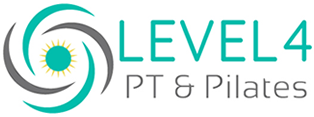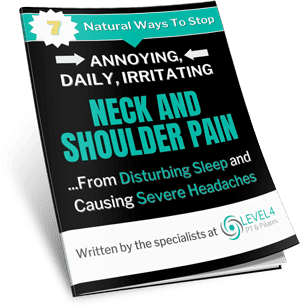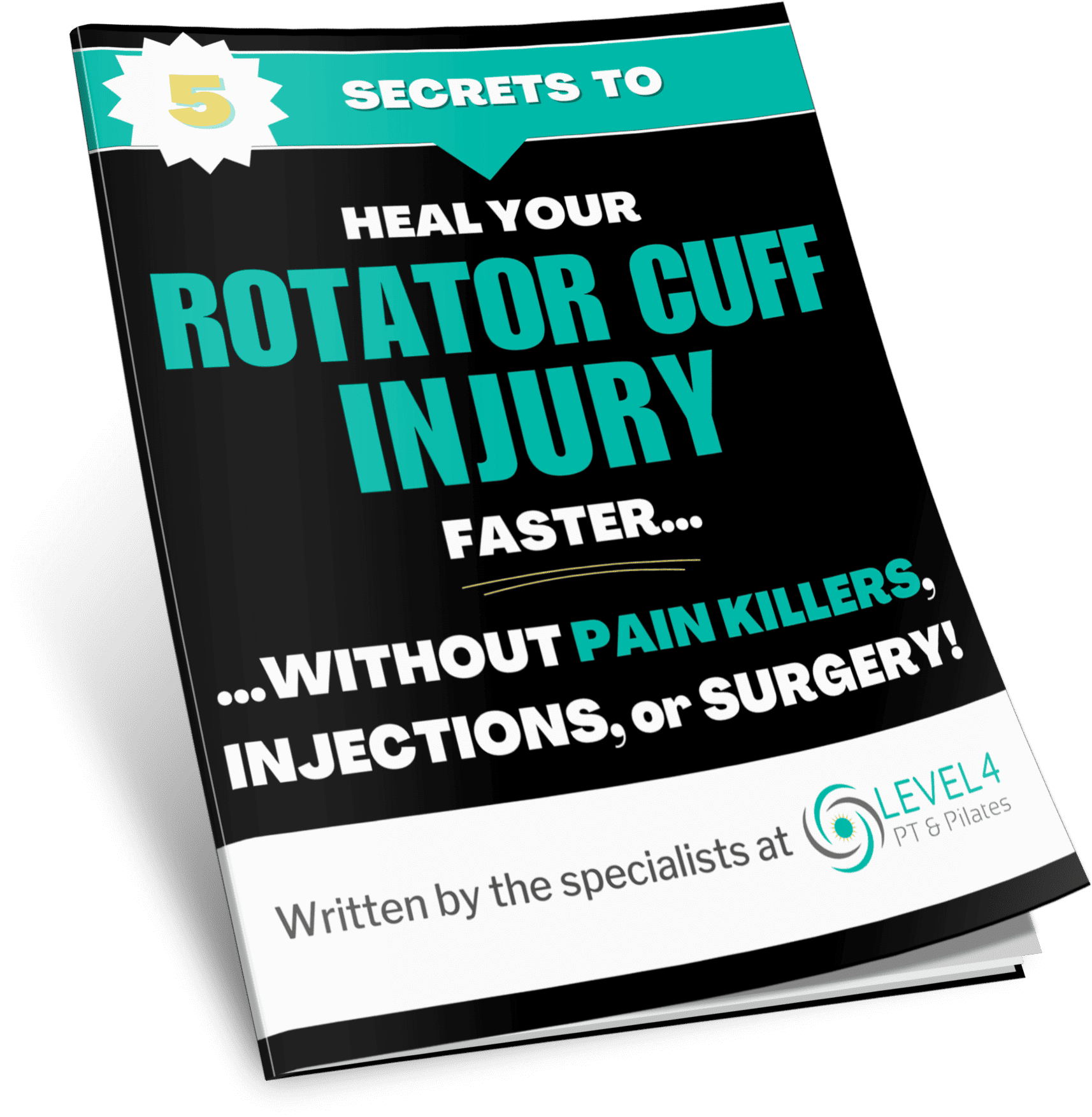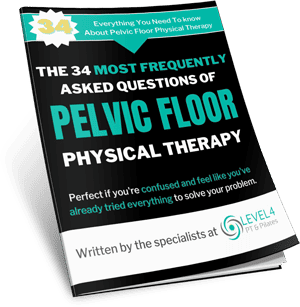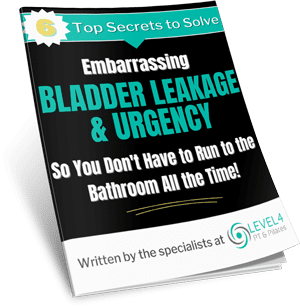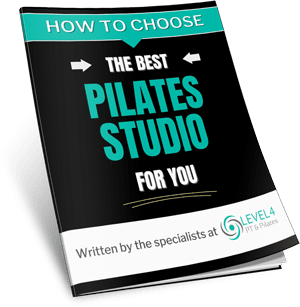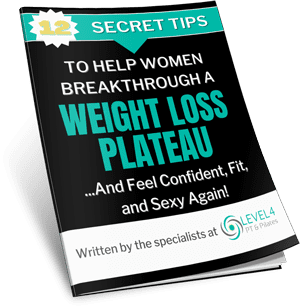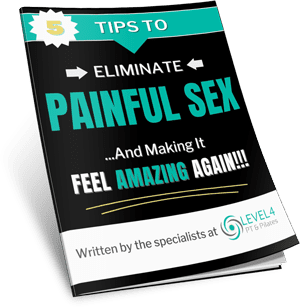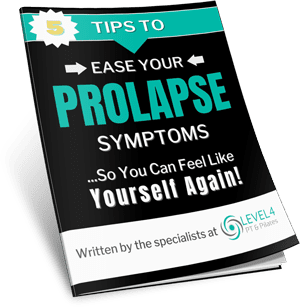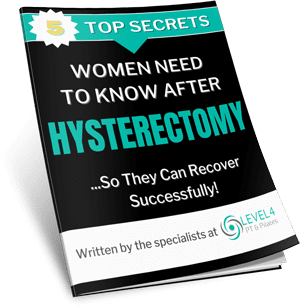
If you’ve listened to the Women’s Health: Happy Hour podcast, downloaded the “7 Reasons Why Pilates Will Ease Your Pain And Reshape Your Life” guide, or visited the LEVEL4 Physical Therapy clinic and seen the slightly intimidating Pilates Reformer machines; you’ll know we’re big fans of Pilates.
It’s not only our favorite form of exercise – to stay active, strong, and healthy, but as Physical Therapists, it’s our most common therapeutic exercise recommendation to clients in our clinic.
It’s no coincidence that most physical therapists – of which there are over 2 million practicing worldwide- either include Pilates in their treatment plans. With tailormade sessions in their clinics. Or they recommend classes to most (if not all) of their patients.
Why? Because we know it works
Like many other (good) PTs, Pilates forms a big part of what we do here. It plays a pivotal role in helping us help women become more active and mobile and become the best versions of themselves. It revolutionizes the way you move and how you hold your body at rest. We can’t recommend it enough.
But what is Pilates, and why is it so helpful for chronic pain and the other health complaints common in women over 40?
Well, if you struggle with back pain and stiffness or sciatica, bladder control and urinary stress incontinence, postnatal back pain, prolapse, painful sex, or any other type of chronic pain, we recommend you read on – because it might just change your life.
Pilates is excellent prenatally to prepare for birth and prevent aches and pains too, and for postnatal rehab. Plus, if you’re an athlete or amateur sportswoman, Pilates helps you run faster, perform better, and prevent injury – keeping you competing at a higher level for longer.
Pilates: The PT’s Favorite Fitness System

In the early 20th century, Pilates’ inventor, Joseph Pilates, nicknamed his revolutionary fitness system “Contrology.” It allowed devotees to strengthen their physical bodies while asserting more control over the all-important connection between mind and body.
He opened his first Pilates studio in America, in New York City, in the 1920s. Since then, it has grown to become one of the most popular fitness systems globally – loved by Kourtney Kardashian, Mandy Moore, Madonna, and Reese Witherspoon.
It tones the body, improves balance and posture, and keeps joints mobile. It’s great for stress relief and makes you appear longer and leaner.
But why do physical therapists love it so much (and how can it help you)?
The secret to Pilates’s appeal within the Physical Therapy community is the emphasis it puts on core strength. It also offers balanced, total body strengthening to prevent imbalance and overtraining or undertraining body parts.
Everything circles back to the core. If you have weak core muscles, you’re more likely to suffer from low back pain, one of the most common musculoskeletal complaints in women 40+. You’re also more likely to experience neck and shoulders problems from poor posture as a direct result of a weak core.
It might also surprise you to learn that your pelvic floor muscles are an extension of your core muscles. In fact, alongside your transverse abdominis, multifidus, and diaphragm. Your pelvic muscles are one of the muscles that make up your “inner core” and the stabilization system for your entire body.
So, you can see why a fitness system that works to strengthen your core is hugely beneficial, significantly if you’re affected by weakened pelvic floor muscles.
We also love Pilates because it’s low impact and doesn’t place any undue stress on your nervous system, like Spin Cycle or intense cardio. Keeping stress levels low is essential as you transition through perimenopause and menopause. The high cortisol levels associated with overly intensive exercise can completely throw off your hormonal balance (and worsen chronic pain symptoms).
Plus, life is stressful enough, right?
Pilates: The Inside Scoop

We’ve already told you why we love it.
But what exactly is Pilates, and how do you do it?
Some people believe that Pilates is just another form of Yoga. This belief couldn’t be further from the truth – especially when we compare it to the popular Vinyasa flow yoga and the Western world version of Yoga.
This fast-paced type of Yoga works to stretch the body and increase flexibility through a range of sequential moves called “Asanas.” These postures are performed with deep meditative breathing to relax the mind and body.
Yoga is a spiritual practice associated with “finding yourself” on the mat. It can be a very beneficial practice that offers substantial health benefits, particularly for stress and anxiety. But it doesn’t provide the same benefits for core strength, balance, and mobility as Pilates. Pilates is much more disciplined and controlled.
There are two types of Pilates: Classical – thought to be the most authentic form, almost like the Pilates practiced by Joseph Pilates himself. This type of Pilates uses a specialized Pilates Reformer machine, mat work, and other equipment like the famous “magic circle.”
The other more contemporary Pilates, which gyms and non-specific fitness studios offer, are mat-based Pilates. These classes use a fusion of traditional Pilates movements combined with different movement styles. They have less focus on moving the body through its full range of motion. Instead, they provide a fun, enjoyable class that bases loosely on Pilates.
Both types of classes are centered (or should be if an experienced teacher takes the class) around the Pilates Scoop or Abdominal Scoop. This mind-body technique requires you to pull in your belly button towards your spine and “zip up” before performing the exercises, but with control of your breath. This movement makes Pilates the #1 for Physical Therapists because it stabilizes the back muscles and prevents injury.
Gym-based classes are great and offer some functional benefits over and above general movement. Still, until you’re knowledgable about the correct spinal and pelvic alignment and movement patterns, we recommend starting with one-to-one or semi-private instruction. Either with an experienced practitioner or physical therapist – especially if you have an injury or chronic pain.
They can help you work on restoring your entire range of motion, flexibility, strength, and mobility. You’ll also be taking steps to prevent joint degeneration, Osteoporosis, and Osteoarthritis.
Pilates: The Benefits
If you’re not already sold on the benefits of Pilates. We think you’ll agree there are many. But here are even more great reasons to love Pilates
Top 5 Reasons To Love Pilates

- Boost Your Energy
Instead of taxing your nervous system – like some forms of exercise make you feel more worn out than when you started. Pilates leaves you feeling energized but not overburdened. You recover well – instead of being left with muscles that ache for a week. The challenging sessions also boost your endorphin levels, so you feel accomplished, uplifted, and less stressed and anxious too.
- Relieve Stress On Your Joints
As you move towards perimenopause and menopause, it pays to protect your joints. This targeted protection helps prevent arthritis and age-related degeneration, leading to knee or hip replacements and cartilage operations, other painful conditions, and potential surgeries. Pilates allows you to get a good workout and tone your muscles without putting stress on your joints.
- Strengthen Pelvic Floor Muscles
The pelvic floor muscles have a lot to answer for because they’re at the center of many health complaints in women over 40. But we can prevent these conditions and improve many of the symptoms by strengthening the pelvic floor and learning how to relax tension in that area. If you have bladder problems, urinary stress incontinence, or want to improve pelvic floor healing after childbirth, Pilates can be beneficial.
- Increase Your Confidence
It’s undeniable that Pilates sessions tone your muscles – even though it’s the health benefits that we find much more attractive. But you can guarantee that when you look good, you feel great too; A strong body and mind is one of the most beautiful assets a woman can possess. Pilates helps you strengthen whatever area you feel you need support. Women tell us they walk out feeling 2ft taller in strength, sass, and stature.
“Pilates introduced me to muscles I never even knew I had. Soon I started to feel longer and leaner. Ten years of Pilates has really changed my body for the better.”
– Lucy Lui
- Community
If you attend a communal or semi-private class, you meet a room full of like-minded women—all cheerleading and pushing you on. Soon the class becomes a highlight on your social calendar and an opportunity to make some great new friends.
If you’d like to try Pilates at Level 4 PT & Wellness with Women’s Health specialists, get in touch with us. Our team is one of San Diego’s leading Physical Therapy experts. You can register for a complimentary session here.
For more information on Pilates: the health benefits and how it can reshape your life, you can download our guide – written by published author Dr. Dawn, here.
Don’t be shy. Get in touch with us! We’d love to help you out, and get you back to health. We look forward to hearing from you!
- The Link Between Menopause and Back Pain - May 21, 2024
- 3 Proven Ways You Can Relieve Sciatic Pain While Sleeping - September 14, 2023
- Menopause and the Impact It Can Have On Your Weight - August 4, 2023
